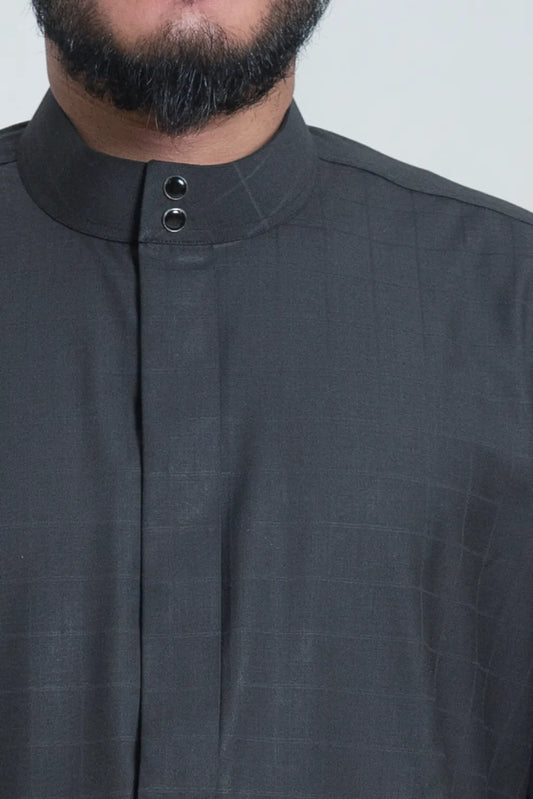Introduction: Palestinian Cartoons as a Lens on the Conflict
Political cartoons have played an important role in the Israel-Palestine war. Cartoons that use powerful images to highlight the suffering as well as the struggles and resistance of Palestinians. They highlight the issues of Palestinian suffering as well as the world's inaction movement and the horrific truth of the situation. Although these cartoons have received criticism, they remain an essential tool to understand this ongoing war.
In this piece, we'll explore 8 of the most powerful Palestinian cartoons. Each with an individual perspective of the current situation.
Gerald Scarfe's Netanyahu Cementing Peace: A Controversial Anti-Semitism Political Cartoon

Gerald Scarfe's "Netanyahu Cementing Peace" cartoon, which was featured in The Sunday Times in 2013, sparked a huge debate. The cartoon showed Israeli Premier Benjamin Netanyahu building a wall with Palestinian bodies using an acrid trowel. The cartoon was intended to critique Netanyahu's policies; however, the shocking images quickly caused claims of discrimination against Jews.
The publication's timing and its publication, which was on Holocaust Memorial Day, intensified the debate. Some critics argued that Scarfe's over-the-top portrayal of Netanyahu was a sly play on stereotypes, causing worldwide outrage. In reaction, Both Scarfe and The Sunday Times issued apologies in a statement that clarified that the image was meant to critique Israel's government. Israeli government, and not target the Jewish community.
The cartoon that depicts anti-Semitism is a compelling illustration of how political cartoons focusing on Palestine can trigger strong reactions. It reveals the tensions within the Middle East region where the pain of Palestinians persists but peace is unattainable. Scarfe's cartoon continues to be a controversial piece, posing crucial questions about the distinction between satire on politics and damaging stereotypes.

Tailor a thobe to fit your size

No measurements required

Worldwide delivery

30 days easy return
Carlos Latuff's Global Intifada (2003): A Symbol of Palestinian Resistance
Carlos Latuff, a Brazilian political cartoonist who is known for his provocative works, came up with the idea of "Global Intifada" in 2003. The Intifada, also known as the Palestinian protests, were important events in the struggle for Palestinian independence. This cartoon shows a person wearing the Palestinian Keffiyeh is seen raising an arm against the background of the Palestinian flag, symbolizing worldwide protest against Israeli occupation.

The illustration demonstrates how the Palestinian resistance isn't just local but international and the world as the head of the figure, highlighting the international solidarity. The cartoon of Latuff connects to the issues that Palestinian lives matter, as well as the ongoing Palestine against Israel conflict, which highlights the ongoing struggle for justice and freedom.
Carlos Latuff's work often sparks discussions, but his Palestinian cartoons are powerful symbols of resistance. For more details on his work, visit the Wiki page.
Handala: A Symbol of Palestinian Resistance
Naji Al-Ali's "Handala" is a powerful Palestinian cartoon that has evolved into an emblem of resistance. The cartoon was first created in the 1960s. Handala depicts a refugee of 10 years old who is always portrayed with his back facing the viewer to signify the insistence on not forgetting the pain of Palestinian refugees forced to flee by the 1948 Nakba. Hands that are clasped emphasize his steadfast stance against the oppression he endures.

Handala is more than an ordinary Palestinian cartoon character; he symbolizes the wider Palestinian fight for equality, rights of return, and the refusal of political solutions that do not solve the fundamental questions regarding Palestinian rights. Handala has become a symbol for the global Palestinian identity and is featured in protests, art, and Palestine against Israel cartoons around the world.
After Naji Al-Ali's killing during 1987, his legacy continues to inspire. He is featured in numerous Hamas cartoons as well as political cartoons about Palestine, which represent the ongoing struggle to defend Palestinian rights to freedom and justice. Handala is still a key character in discussions about the Israel-Palestine political cartoons and the ongoing conflict between Israel and Palestine.
Gaza, the USA and Humanitarian Aid: A Critical Commentary on Palestinian Struggles
Patrick Chappatte's Gaza The USA as well as Humanitarian Aid critique the role played by the United States in the Israel-Palestine conflict. The image shows bombs that are labeled "Made in the USA" placed on the ground and a Palestinian figure posing with the teddy bear up at a box that has a parachuting device with the words "Customer Support."

The cartoon criticizes the insanity of international response to conflict and questions the efficacy of humanitarian aid when issues at the root of occupation and violence aren't addressed. Chappatte's work reveals the skewedness of Israel's Israel Palestine political cartoon discourse and the anger Palestinians feel as a result of oppression that continues to be imposed on them.
For more cartoons by Patrick Chappatte, look through his archive from The New York Times.
Two-Headed Serpent: Critiquing Israeli Leadership
Emad Hajjaj's Two-Headed Serpent cartoon criticizes Israeli leaders Ehud Barak and Ariel Sharon, portraying them as serpents. Two heads represent their apparent shadiness and negative actions towards Palestinians.

This Palestinian cartoon makes use of the serpent to emphasize the deceitful aspect of Israeli policies, implying that successive Israeli governments cooperate to ensure control over Palestinian territories.
The cartoon reflects the anger a lot of Palestinians are feeling toward Israeli leadership, highlighting the need for accountability and justice. Hajjaj's work continues reflecting the brutal reality in the Israel-Palestine political cartoon discourse.
Escalation in the Middle East: A Satirical Take on Palestinian Suffering

The escalation of violence in the Middle East humorously portrays the destruction in Gaza and the narrator calling the violence a "landlord dispute in Jerusalem." This absurdity highlights the indifference of the world to the actual suffering of Gaza.
The Palestinian cartoon focuses on how the world community tends to minimize the seriousness of the Israel-Palestine war. Through minimizing the violent nature of the conflict, it emphasizes how important it is to find a resolute international reaction in response to Palestinian pain and ongoing conflicts.
Netanyahu Cartoon: Accusations of Anti-Semitism in Cartoon
Steve Bell, a cartoonist who worked for a long time at The Guardian, was sacked for his controversial cartoon of Israeli Premier Benjamin Netanyahu. The cartoon, which depicts Netanyahu performing a surgery on his stomach and Gaza outline, raised questions regarding the pound of flesh symbol in Shakespeare's Shylock, which is a character that is often associated with stereotypes about Jews.

The incident demonstrates how accusations of anti-Semitism are used in order to limit free speech, especially when it comes down to criticism of Israeli policies as well as the way they treat Palestinians.While it is essential to stay clear of authentic anti-Semitic symbols These accusations could silence criticism of issues such as the Palestinian struggle and the hypocrisy of international response to the continuing violence.
The Key of Return: Symbolizing Palestinian Rights and Justice
Naji Al-Ali's "The Key of Return" cartoon is a powerful representation that speaks to the Palestinian refugee crisis. The key symbolizes houses Palestinians have been forced to quit in the 1948 Nakba and their ongoing fight for their right to return. It is a message to the thousands of dislocated Palestinians and their families who struggle for justice.

The Palestinian cartoon is now a symbol of the struggle for the right to return, a major issue in the conflict between Israel and Palestine. The cartoon calls on the international community to confront the issue of displacement and apathy towards Palestinian rights, highlighting the need for justice and respect for the displaced Palestinians.
The key is an enduring emblem that is a symbol of Palestinian resistance, symbolizing the continuing call for justice as well as the return of Palestinian refugees.
Conclusion: The Power of Palestinian Cartoons in Shaping Global Discourse
Palestinian cartoons have played an important role in showing the current struggle for the Palestinian people. Through their powerful images, they bring to light issues like the right to return, the struggle for justice, and the world's indifference to Palestinian suffering. These Israel Palestine cartoons are used as a critique of the conflict between Israel and Palestine, shining light on the injustices suffered by Palestinians and calling on the world to tackle these problems. As a symbol for resistance, motivate action and solidarity in the struggle for Palestinian rights to freedom and justice.



 https://sunaan.com
https://sunaan.com










